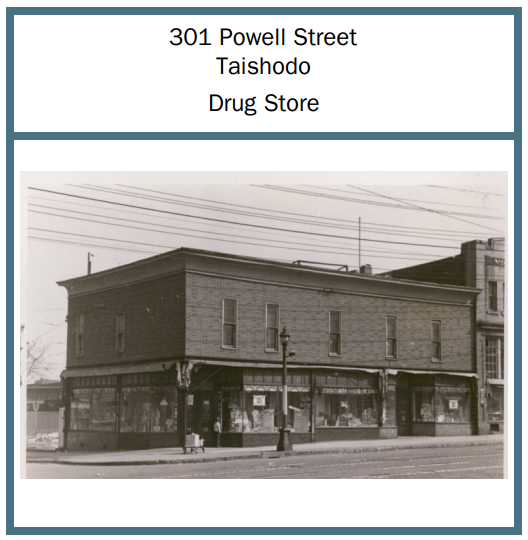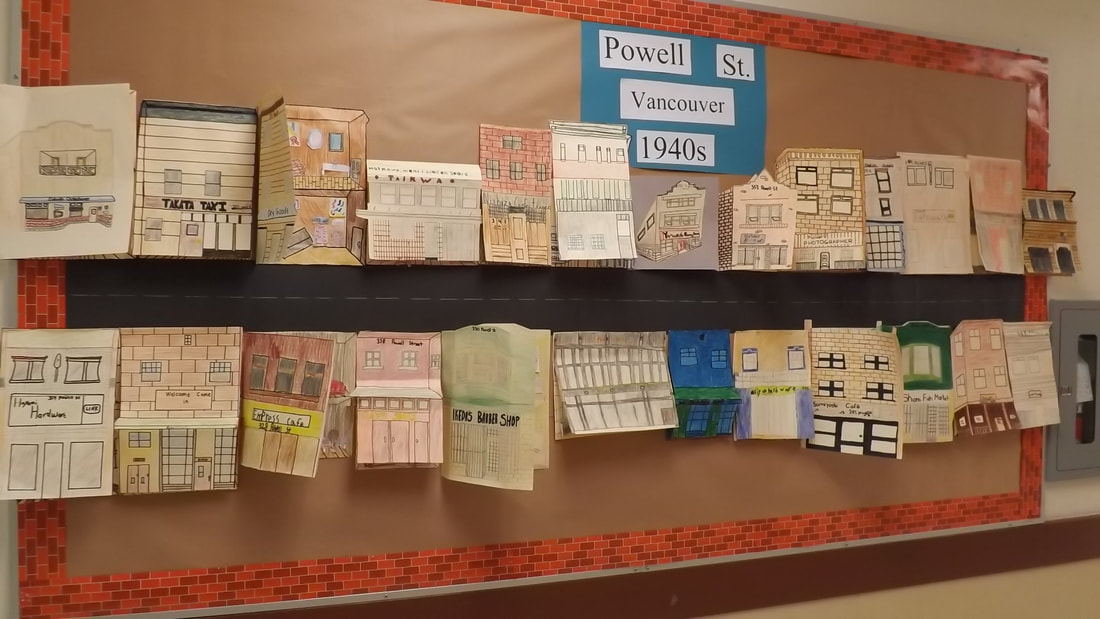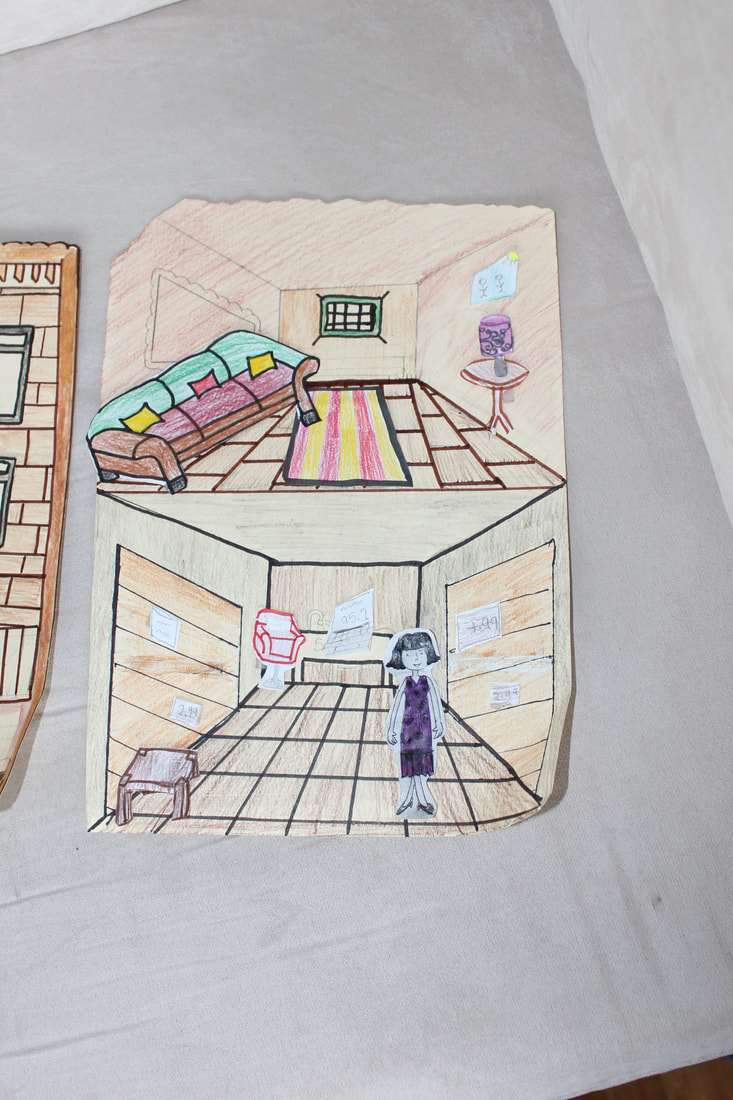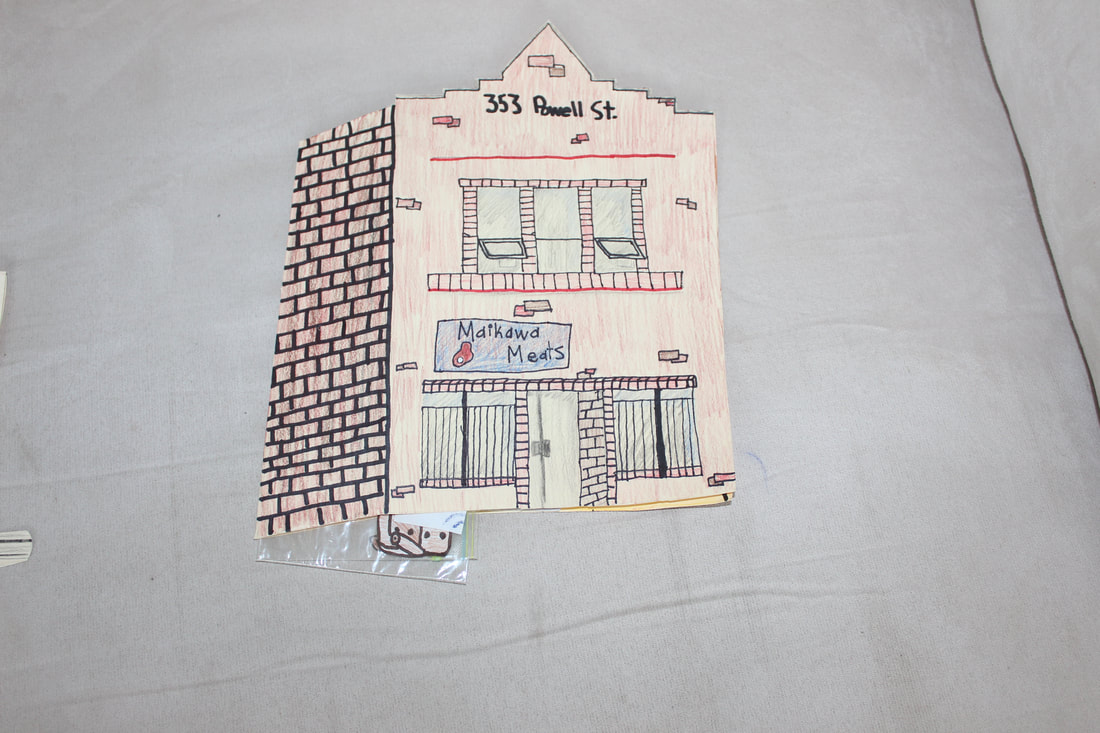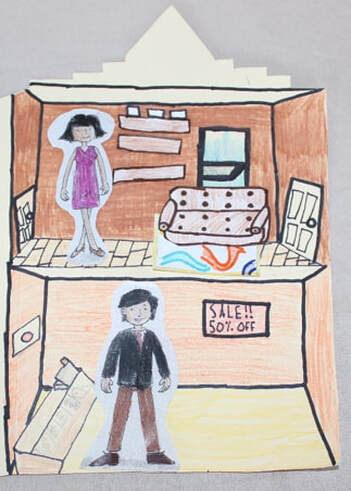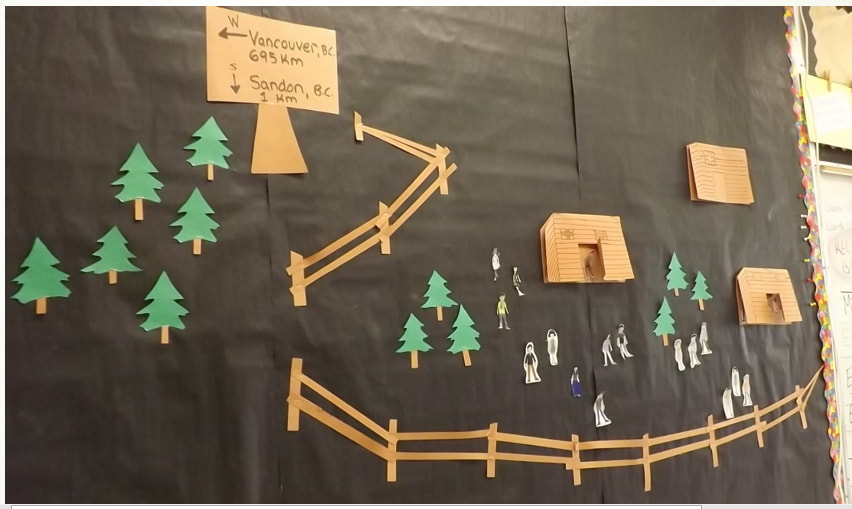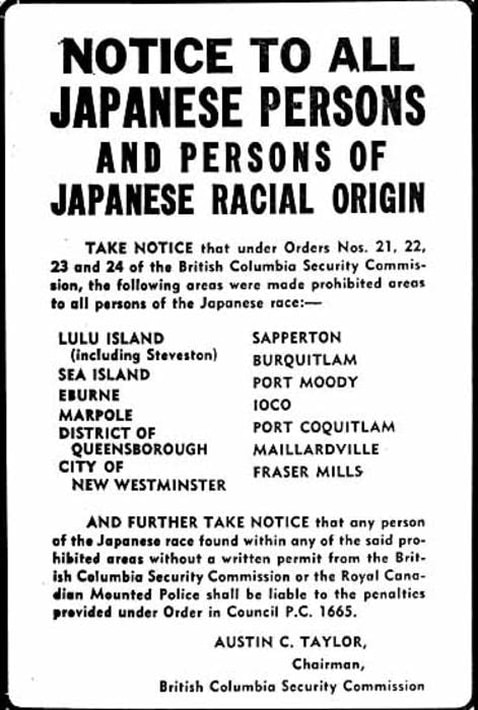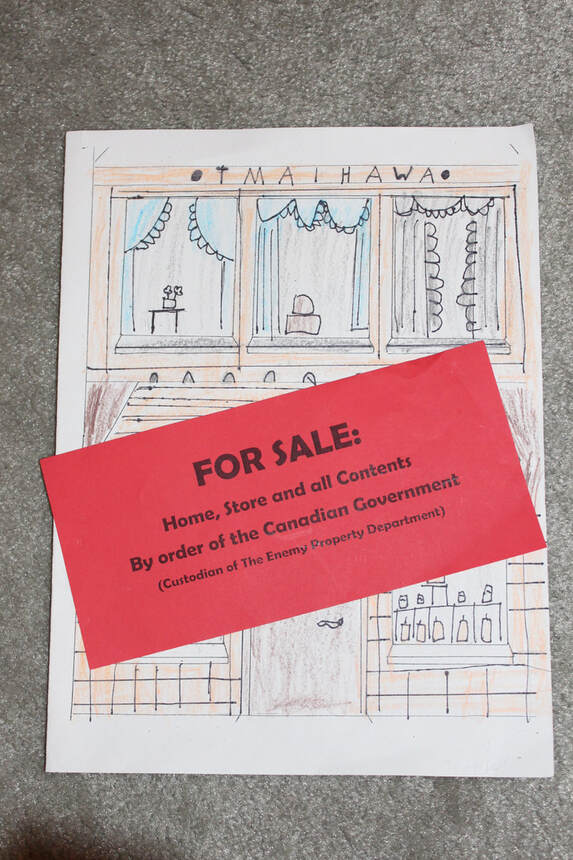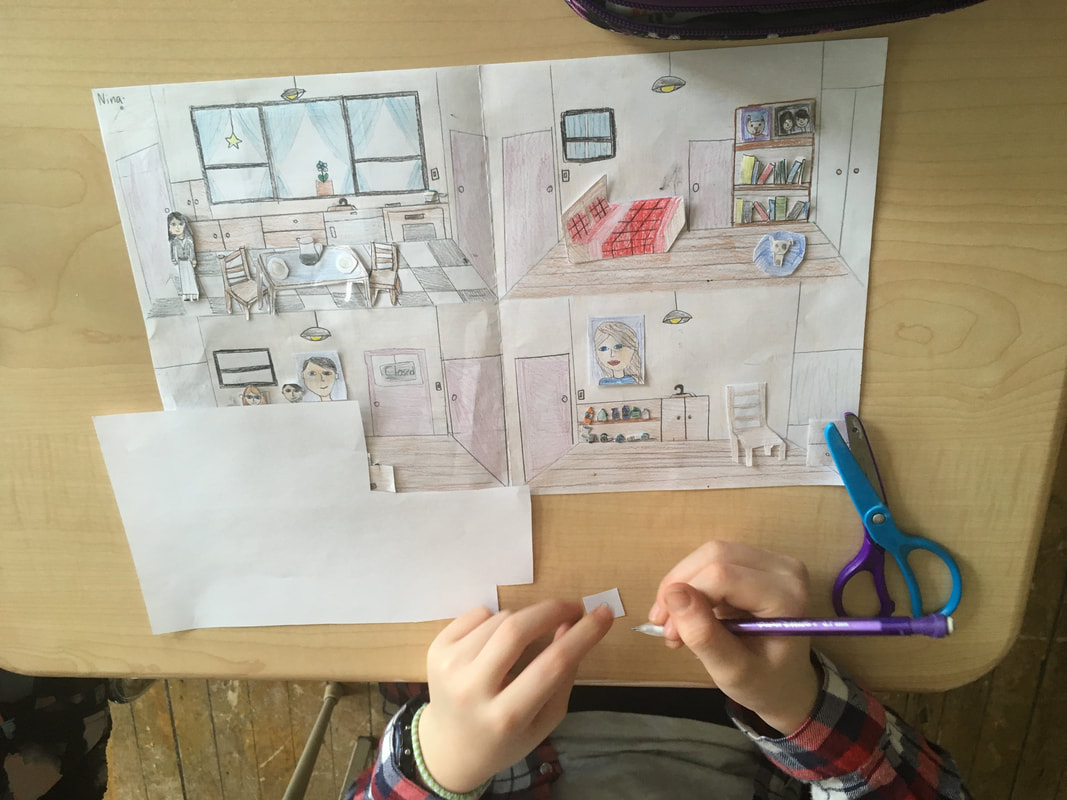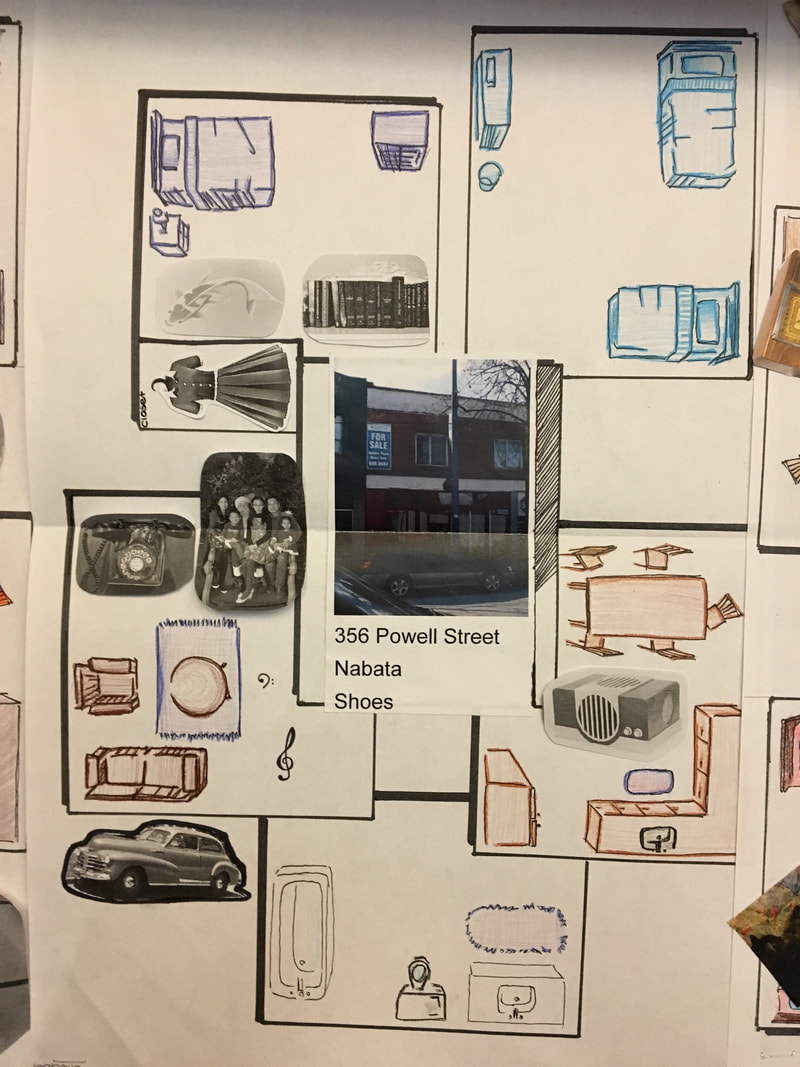Main Dispossession Activity:
The Powell Street
simulation
Students learn about dispossession through a bulletin board simulation of a Japanese Canadian community.
This activity helps students understand the difference between belongings (one’s property and possessions) and belonging (having a home and being part of a community).
Why
Know
- Immigration to BC (Canada) and resulting growth of cities
- Contributions of immigrants to Canada’s development
Do
- Ask questions; gather, interpret and analyze ideas; and communicate findings and decisions
Core Skills
- Understand interconnected aspects of cultural identity (Positive Personal and Cultural Identity)
First People’s Principles of Learning
- Learning is embedded in memory, history, and story
- Learning is holistic, reflexive, reflective, experiential, and relational (focused on connectedness, relationships, and a sense of place)
How
MATERIALS
- Bulletin boards
- Art / Colouring supplies
- Property cards
- Tags or blank index cards
- Tacks or sticky tack
- PowerPoint instructions
- FAQ for Powell Street simulation
- Clickable GIS maps
This is an overview of the Main Dispossession Activity that runs concurrently with the recommended lessons. Check also the FAQ section for this simulation.
Start this activity as soon as you can so you will be ready to take away the students’ “possessions” when the internment lessons begin. We have found that students want to spend a lot of time making their homes and possessions.
Introducing the simulation
- Before this activity, prepare a bulletin board with an empty street and print the property cards.
- During instruction time, tell students they are going to learn about an immigrant community by creating one on a classroom bulletin board. You can use the Powerpoint to help introduce this activity.
-
Give each student a Property Card which includes:
- A picture of their property
- The address (so they know where to put it on the map)
- The name of the family who owned it
- The kind of business it was
Part 1: Creating the Powell Street simulation
- Using a folded piece of manila tag or construction paper, each student will create the adopted building.
- Each card will be folded so that the outside of the card is the outside of the building and the inside of the card is the inside of the building.
- The businesses were on the bottom floor of the building, and the residences where people lived were at the top.
- The buildings can be stapled onto the Powell Street bulletin board in relative order according to addresses.
- NOTE: The buildings should be empty, containing no possessions and no people. We will address these in the next part.
- Tell students now that we have the buildings, we need to put the people and their belongings into their properties.
- Show pictures of household and store goods from the 1940s and pictures of Japanese Canadians from this era.
- For the number of people, students can base their simulated families on their own families.
- Using manila tag or the blank sides of cue cards (something fairly sturdy), students draw, colour, and cut out their people and possessions.
- The people and possessions are pinned or sticky tacked into the students’ buildings. These contents need to be loose (not drawn in, glued, or stapled) so that they can be moved, added to, or removed later.
- Note: if you are doing the other recommended lessons, the removal of their property should coincide with Introduction to Internment: Viewing Photographs
- Powell Street was a vibrant community. Encourage students to move their avatars around. Have them visit their friends in their homes, chat on the street, or shop at their places of businesses or use their services. They could also trade goods or borrow items from each other. Some pilot teachers moved the avatars when the students weren't there so it was as if the avatars had a life of their own. This created a lot of interest in students who checked daily to see where their avatars ended up.
Part 3: Dispossession
- Once students have amassed possessions (and have become attached to their properties), Pearl Harbor happens. For maximum impact, let students know this happened at the end of the day or the end of the Social Studies period.
- When the students are gone, make an internment camp on a separate bulletin board, and move their people to the internment camp.
- When the students return the next day, if they don’t notice their people are missing from Powell Street, tell them that their Powell Street avatars have been moved to the internment camp. When the students ask why, show them the notice.
- As time goes on, their possessions in the Powell Street homes and businesses start to disappear.
- This part of the simulation can be followed by the lesson on Diposession.
Assessment Considerations
Note
Because this main activity runs the length of the entire unit, assessment for this activity is on-going but focuses on these guiding questions (that classes should continually consider):
- What is the difference between belongings (one’s property and possessions) and belonging?
- What was it like to lose your home, your possessions, and your community due to prejudice? How do you deal with this kind of loss?
SUGGESTED TASK
- You could also assess students’ understanding pictorially by looking at students renditions of their building, avatars, and possessions. Are they accurate and appropriate to the time and situation? This is a way of honouring diverse learners by allowing them to show their historical understanding in different media.
Extension and Variations
Variations
- One of our pilot teachers, Ilana, used a big fold out page, so students could have more room for possessions. Also, when the possessions were removed, Ilana posted them in various places around the school, including outside the vice-principal’s office. Students scurried around looking for their lost possessions, trying to get them back but were unsuccessful because their possessions had been sold at auction (without the owners’ permission).
- Carleen used pre-made templates for the buildings, people, and possessions. You could do that if you are pressed for time or if art is not your class’s strength.
Extension
- Many sites of internment. Many families decided to go to prairie sugar beet farms instead of to government-run internment camps because they thought doing so would mean a better chance of keeping the family together. In the internment camps, many of the men were sent to work camps to build BC roads. There were so many unknowns: no one knew how long the war would last or when Japanese Canadians would return to their homes. You could ask students to weigh the pros and cons of going to government-run internment versus relocating to work on a sugar beet farm.

